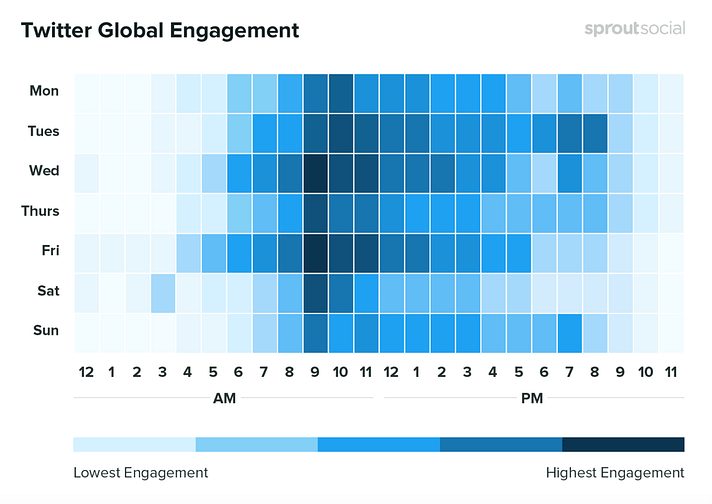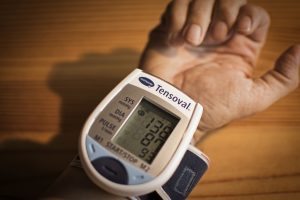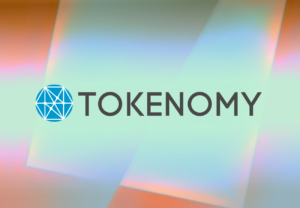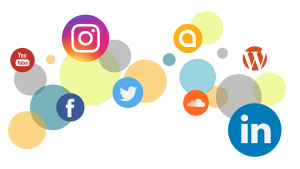Of course, as a beginner or even a pro webmaster, you must wonder which is the Best Time To Post Blogs on your website or social media, right? Perse, if you’re publishing high-quality blog content, you’re already off to a great start in terms of online marketing. However, many factors will determine your web content success, such as knowing the best time to post a blog.
By carefully planning your content schedule, you can help your blog posts get the attention they deserve. Such elements include finding the perfect day to share your content. As well as the best time when your target audience is online and hungry for quality content. If you’ve never blogged before and you’re starting from scratch, don’t jump in with your first-and-only piece.
Instead, you should have a minimum of three to five pieces of content in the hopper before you hit the “publish” button on your website, a third-party website, or a social media platform. As you move forward, it’s a good idea to keep that three-to-five strategy in place. This allows you to work ahead so that your resourceful website blogs are available when you need them.
With that in mind, in this guide, we’ll discuss why timing is everything in the world of blogging. Then we’ll explore three key factors to consider when determining the best time to publish on your blog for the maximum number of page views, social shares, and comments. So, let’s get started!
What Is The Best Time To Post Blogs?
Generally, the best time to post blogs, or rather the perfect blogging frequency will vary depending on your target audience and goals. For example, if you’re trying to increase your click-through rate (CTR), you may need to publish more frequently. However, if you’re blogging to raise general awareness, you might benefit from a less aggressive publishing schedule for posts.
As a general rule of thumb, it makes sense to publish as much content as possible without compromising quality. After all, even search engines like Google or Bing favor blogs that are updated frequently. Meaning, the more content you publish, the better your chances are of climbing the search engine rankings.
At a minimum, you’ll want to try and publish new content every week. Not to mention, many blogs have achieved success by publishing around three times per week. Here at the Web Tech Experts blog, we’ve found publishing four times per week to be the sweet spot. However, quality is also essential.
Related Resource: Why Is Social Media Engagement Important? A Novice Guide
By all means, it’s far better to publish one skyscraper post per week rather than three mediocre articles. Moreover, if you push out tons of low-quality content, you risk getting lost in the noise — with millions of posts published every single day.
You’ll also likely struggle to retain readers, who may quickly grow tired of being bombarded by poor-quality content. So, now that you know the basics of the best time to post weblogs, how do you come up with a working strategy.
The Best Best Time To Post Blogs And Social Media Content
For your information, business blogging has come a long way from its very humble beginnings in the mid-1990s. Today’s website blogs and post articles are an integral part of a successful content marketing strategy. Well-crafted blogs position you as a well-thought industry leader, guide your audience along the sales funnel, and boost your search engine rankings.
The issue that constantly comes up is how often should you publish blog posts. What is the best blog posting schedule? In most cases, the challenge is there isn’t a single answer to the scheduling question. The good news is there are guides to help you make the right moves concerning your blogging strategy and the creation of your content or editorial calendar.
The most popular days and times that brands post content to various marketing channels aren’t necessarily the most effective, according to a series of reports from TrackMaven and other related sources.
Key findings from the research include the following:
- Instagram: The most popular day that brands post content to Instagram is Thursday, and the most popular time is between 1 PM and 2PM; the most effective day (i.e., with the highest engagement level) is Monday and the most effective time is between 8 AM and 9 AM
- Email: The most popular day for sending emails is Thursday, and the most popular time is between 11 AM and 12 PM; the most effective day is Thursday, and the most effective time is between 2 PM and 5 PM.
- Facebook: The most popular day for posting to Facebook is Thursday, and the most popular time is between 12 PM and 1 PM; the most effective day is Sunday, and the most effective time is between 12 AM and 1 PM.
- Twitter: The most popular day for tweeting is Thursday, and the most popular time is between 12 PM and 1 PM; the most effective day is Sunday, and the most effective time is between 10 PM and 11 PM.
- Blogs: The most popular days for posting to blogs are Tuesday and Wednesday, and the most popular time is between 11 AM and 12 PM; the most effective day is Saturday, and the most effective time is between 12 AM and 1 PM.
The “now, duh” answer is that the more often you post, the higher likelihood of good results. Google likes high-quality content and plenty of it. Additionally, frequent blogs give your audiences something to look forward to, meaning they’ll visit your website or social media platform more frequently. In most cases, frequent website visits mean higher levels of engagement.
Not forgetting that the higher levels of engagement help your audience move quickly through the sales funnel. But before you resign yourself to the two to four-time-a-week rule of thumb for blogging, there are a few “yeah, but . . .” Questions to ask:
1. What is my content strategy?
That strategy will have a definite impact on your blogging schedule. If your intent is to increase website traffic or double your subscriber base, you might want to post and publish more often. If you want to educate or show yourself off as an industry thought leader, creating, posting, and publishing long-form content less frequently could be the way to go.
2. What is my platform?
Thanks to the internet, your blogs can pop up on your personal website, third-party site, or social media platform. The latter, like Facebook and Instagram, connect you to a large audience. The downside is that your blog could appear and disappear without your audience ever reading it, thanks to an ever-changing feed. In this situation, you might need daily blogs to — er — feed the hungry social media feed.
Don’t tear your hair out just yet. “Blog” isn’t limited only to long-form articles. Consider brief listicles or curated content. A two-line comment about other content in your arsenal, such as an ebook, also qualifies. The goal here is to get your audience’s attention.
Now, when it comes to something a little less transitory, like a website, the frequency might not be as much of an issue, though the challenge here involves driving traffic to your content and converting leads into sales.
3. What are my resources?
Whether you’re posting one-liners on social media or crafting a massive infographic for your website, blogging takes time and effort. If you head up a team of creatives or outsource to an expert content strategy firm like ClearVoice, you can generate a lot of really fine-quality content on a frequent basis.
But if you are the sole blogger, you should honestly rethink how frequently you can produce, post, and publish. Once the self-contemplation is completed, decide on a consistent time frame. If you can only produce one blog a month, that’s fine. Just be sure to do so, on the same day of each month.
4. Can I maintain quality?
Quality must ALWAYS surpass quantity when it comes to successful blogging. Cranking out a blog every two days or so is terrific — unless that blog stinks. A poorly crafted blog means your audience will bypass it. It’s important to realize that as your audience goes, so goes Google (and so goes your search engine page ranking, or SERP). Google is pretty adamant regarding content that is E-A-T; expert, authoritative and trustworthy.
A Working Strategy For Content Creators
At all costs, you’ve probably figured out that there isn’t a specific rule regarding the best blog post blogs or scheduling your website post articles. Rather, it should fit your resources, content strategy, and audience. However you create your editorial calendar or blog post planner, consistency is important. Stick to your content calendar’s parameters and timing.
With millions of posts being published daily, setting your content up for success is important. The date and time you publish each article can determine whether it finds a receptive audience or gets lost in the crowd. Technically, once you’ve decided on an initial frequency, monitoring how this approach helps you achieve your goals is smart.
Your best starting point is by assessing your blog post’s performance. And as such, you can consider using a tool such as Google Analytics 4 Property to track the performance of your content. But keep in mind, every blog is very different from each other — in terms of design, layout, appearance, niche, etc. So, we highly recommend experimenting with your publishing schedule.
More so at your own pace, and through trial or error plus careful monitoring. By so doing, you can find the frequency that delivers the desired results for your particular niche. Eventually, whether you’re writing for fun or you want to generate revenue, one thing is true for all bloggers – you want people to read your content. To help you find the best time to post blogs for your website;
Consider the following:
- Your Content Goal
- Social Media Engagement
- Blog Posts Scheduling
- Publish Articles Regularly
- Audience Demographics
- Competition Analysis
- Social Followers Conversion
Once you’ve written and rewritten the perfect post, it’s important to get your timing right. Having said that, let’s look at the underlined elements with the right strategy to always consider before hitting that publish button.
1. Identify Your Ultimate Goal
In the first place, your content publishing schedule should reflect what you ultimately hope to achieve. Some common goals include generating the maximum number of page views. As well as increasing engagement in the comment sections too. Unfortunately, there’s no perfect day or time that guarantees the desired results for every website.
After identifying your goals, it’s smart to experiment with publishing your content on different days and times. And then, monitor the results carefully. By running these tests, you should be able to identify the days and times that bring you closer to your specific goals. Ramsay Taplin, the founder, and CEO of BlogTyrant recommends performing one test per month (watch video).
It’s also wise to research your target audience’s occupations. Including when they’re most likely to be at work and whether their jobs involve internet access. You can then consider whether they’re likely to read your content while at work. For example, let’s say you’re targeting marketing professionals.
Well, it may make sense to make your “best practices for a successful campaign” post live during their regular workday. By contrast, you may be sharing advice on how to launch your own business or get your garden ready for spring. In these scenarios, people will typically consume this content outside of work, which your publishing schedule should reflect.
2. Track Your Social Media Engagement
Important to realize, social media engagement is more than just the accumulation of followers across social platforms. Businesses that focus on building their social media engagement can highly benefit from better marketing reach and ROI.
On one side, a greater brand reputation awareness makes it easier to attract new customers. Notably, social media engagement conversations can take place on individual social media platforms. Such as Instagram, Twitter, Facebook, LinkedIn, blog forums, or even a third-party review website like jmexclusives.
On the other side, a strong social media engagement strategy allows businesses to remain in constant contact with their customers. If you want to achieve a large number of social shares, there is data that suggests some days and times may deliver more positive results than others.
Get Started: Buffer | A Simpler Social Media Authentic Engagement Tool
Let’s say your goal is to generate maximum engagement on Facebook, for example. Well, Sprout Social recommends posting your content on Wednesday at 11 am, or between 1 and 2 pm. However, they also found consistent engagement from Tuesday to Thursday between 8 am and 3 pm.
If you’re posting to Instagram, Sprout Social identifies Wednesday at 11 am and Friday at 10 to 11 am as peak engagement periods. Similarly, tweets posted on Wednesday and Friday at 9 am tend to generate the most buzz:
For LinkedIn, the study found Wednesday, Thursday, and Friday as the best days to post content. However, social media is highly time-sensitive, and there’s conflicting information out there. For example, Backlinko and BuzzSumo analyzed 912 million posts and found little difference between each day.
3. Consider Scheduling Your Blog Posts
As I mentioned, besides knowing the best time to post weblogs, you can also consider implementing a blog scheduling strategy. Let’s look at a simple case scenario. There’re so many reasons why I schedule blog posts — for the readers of this site for instance.
At times, it could be due to constant power outages lasting a whole day or two. Some cases of internet connection failure here and there. Or maybe, I am just off on a weekend or even on a long vacation. Unfortunately, nobody cares about your other daily commitments.
Whatever the reason is, knowing how to schedule blog posts for your website is one of the greatest ways you can also consider. Especially, to make sure that there is a constant flow of content. More so, for your site readers to stay put always.
Sometimes, it’s also good to schedule WordPress posts if there are upcoming events that are deemed fit for your reader’s attention. Like a Cancer Campaign, Black Friday, or any other similar occasion that affects your business. And as for SEOs, it’s the best strategy to make use of traffic targeted posting.
Resource Reference: How To Schedule Blog Posts For Your Website And Social Media
As a matter of fact, another topmost key to schedule blog posts successfully on your WordPress site is to start small. As you work your way up while staying focused on your goals. And just like there is a way to create a successful blog, the first strategy is to plan your editorial calendar.
After planning for your editorial calendar, you should then publish your blog articles regularly. And that’s where the scheduled posts feature comes in handy. You can write your articles at your own pace and get ahead on your editorial calendar. Once you finish writing, you can schedule the post to be published at a specific date and time.
Another reason to schedule your posts is to benefit from peak traffic hours. There is a certain time in a day when each website gets the peak of its users. By publishing at that time, you can leverage existing traffic to increase your page views.
4. Try Outrunning Your Competition
The level of competition also affects how much attention your blog receives. You might attempt to reach as many people as possible by publishing during peak activity hours. This can generate more comments, social shares, and page views. However, there’s also a higher chance of your content getting lost amid the noise.
Alternatively, you might publish during low activity hours, when you’ll have a smaller potential audience but may achieve a higher percentage of engagement and conversions. Your content will also have increased prominence due to the reduced competition.
To identify peak and low activity hours for your industry, it makes sense to study your direct competitors given your business by industry. You can use a tool such WhatRunsWhere or Google Alerts to notify you every time a competitor publishes a new post.
Resourceful Tool: MailPoet | The No #1 Email Plugin for WordPress Websites
This can help you build a picture of when your competitors are most likely to post new content. Armed with this information, you can either adjust your schedule to avoid direct competition or try to redirect your target audience by publishing at the same time as your competitors.
It may also help to evaluate how well each competitor’s content performs. This can be a way to pinpoint days and times when your target audience is particularly receptive, which is useful information to feed into your tests. You can analyze how well the competition’s content is performing using a tool such as BuzzSumo as well.
By learning from your competitors in this way, you may be able to fast-track through the trial and error stage. And then, discover the perfect dates and times when you should be publishing your content.
5. Analyze Your Audience Demographics
Sometimes, the best time to post weblogs will vary depending on your target audience as well. The first step is learning about your audience. Whilst, using tools such as Google Analytics and Facebook Insights. And then, you can tweak your schedule to suit your user demographic.
Location is very important, particularly when it comes to time zones. This becomes more complicated when your audience spans multiple locations. For instance, if you’re targeting the United States, it’s worth noting that almost half of the US population is in the Eastern Time Zone (EST). Below is a sample demographic stats:
In addition, the EST and Central Time (CT) zones combined represent almost 80% of the US population. Therefore, it may make sense to prioritize these time zones when targeting an American audience.
6. Turn Your Social Followers Into Active Readers
Before you start thinking of conversions, you’ll need to find out how you can Get Plus Followers first. By creating a social media campaign that will engage your target audience and then convert them into active readers. Start by creating a schedule that helps you engage with your following consistently.
You can also try and automate your posts throughout the day to space your content out and save you time. Luckily, there are different apps to help you distribute your content throughout the week — so that you’ll have things to talk about. Find out the best times to through your content out there.
You may have followers globally, and you have to cater to their time zones. Think about the impact each timed social media post has on people. Have specific times throughout the day and night where you respond to comments. And even repost them to help spread more awareness about what you’re talking about.
The more you engage and become accessible to people’s questions and concerns, the better you’ll be in the long run. This is a great start to know your target audience even better. And, as a result, you’ll learn the best time to post weblogs. Learn how to turn social followers into clients with your readers in mind.
Final Words;
Notably, if you live in a different time zone than your readers, then it can be a problem. Imagine having your peak time as 3 a.m. where you live. Scheduling posts can be convenient for this. In addition, scheduling posts also comes in handy when you are going on vacation. You can schedule your blog posts and enjoy your holidays without worrying about writing and publishing content.
In short, The ability to schedule blog posts in WordPress is a great way to regulate content output and timing. What if you have a lot of articles waiting to go live? Publishing them in a single go may not be the best approach. Scheduling posts helps you better manage your workload regarding your website’s content. It might not create articles for you or build your website’s pages.
Related Resources: Social Media Marketing (SMM) | 10 Basic Steps To Do It Right
But it will help you by automating a small part of the publishing process. Technically, to identify the best time to post blogs on your website, we also recommend analyzing your unique audience using platform-specific tools. For beginners, Twitter Analytics and even Facebook Page Insights are both effective choices.
Finally, we hope this guideline will help you or your web content marketers as you create your strategy for the best time to post blogs. Likewise, for other ways to get more eyeballs on your blog content, you can also follow my leads on how to increase blog traffic. If you need more customized support, you can Contact Us and let us know how we can come in handy.











